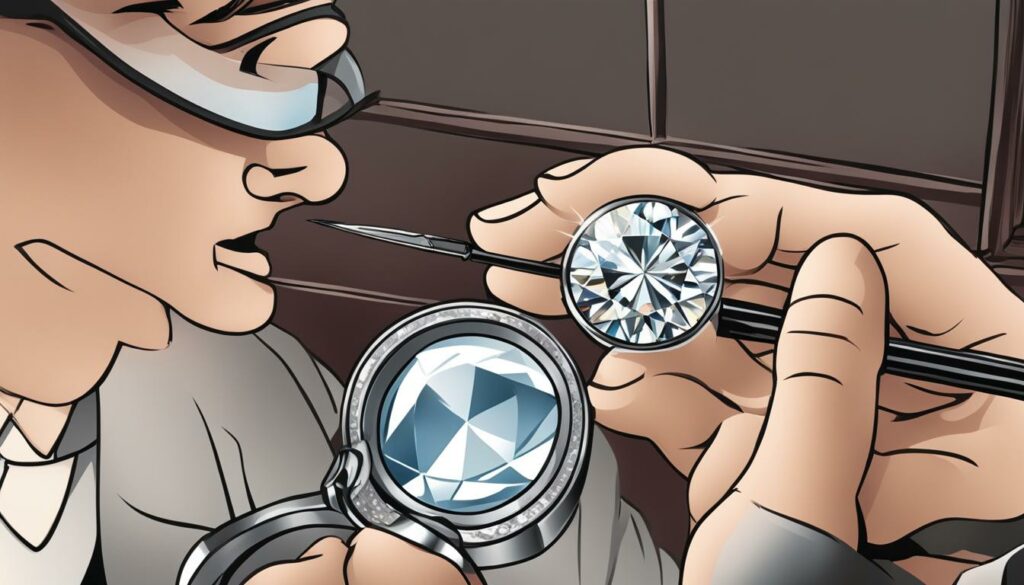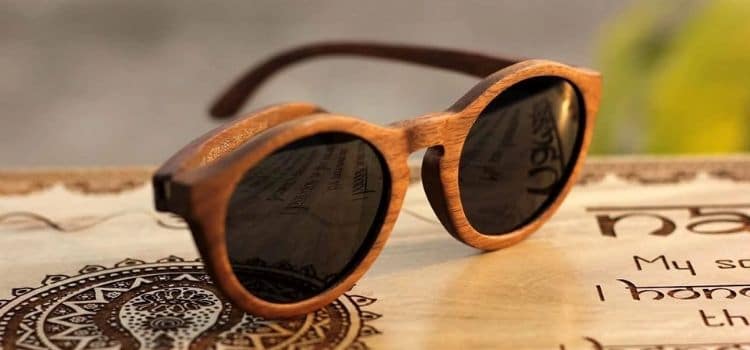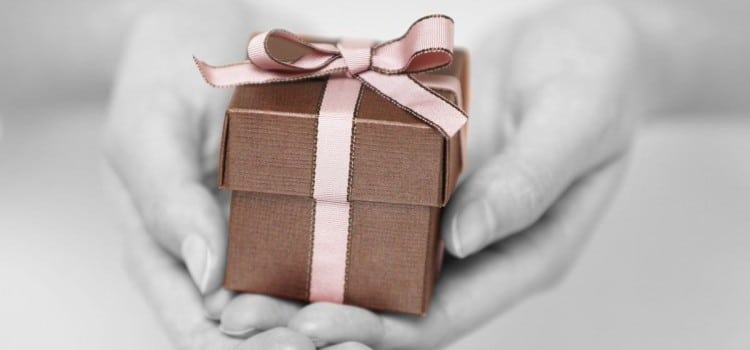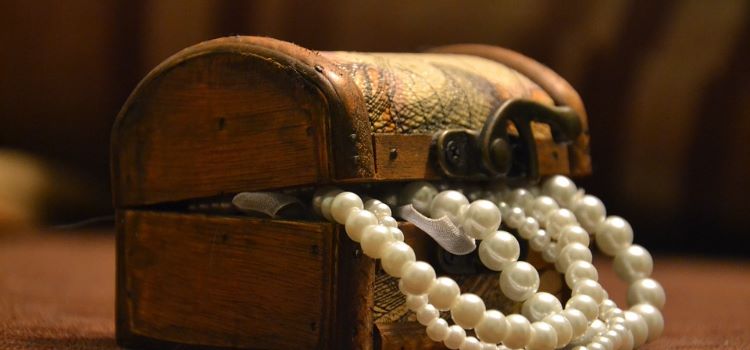Are you ready to unlock the hidden beauty of your precious gems? Learn how to use a jewelers loupe like a pro with this comprehensive guide. Whether you’re a jewelry enthusiast or a proud owner of exquisite pieces, mastering the art of using a jewelers loupe will take your appreciation to the next level.
Using a jewelers loupe allows you to observe the intricate details of your jewelry with precision and clarity. By resting the loupe against a steady surface and gently moving the jewelry instead of the loupe, you can achieve a consistent and focused view. This technique ensures that you don’t miss any subtle features that make your gems truly exceptional.
Join me as we dive into the world of jewelers loupes and discover the techniques that will elevate your admiration for jewelry. From examining gem exteriors to exploring cabochons, we will explore every aspect of using a jewelers loupe effectively. Get ready to appreciate the brilliance of your gems like never before!
Why Do You Need a Loupe for Jewelry Examination?
When it comes to examining your jewelry, a jewelers loupe is an indispensable tool. Its many benefits make it a must-have for any jewelry owner. With a loupe, you can observe the intricate details of your gemstones and diamonds, allowing you to better appreciate their beauty and value.
One of the key reasons for using a loupe is to identify any characteristics or flaws in your jewelry. By closely examining your diamonds, for example, you can determine if they are real or synthetic. A loupe also helps you understand the quality of your gemstones by assessing the 4Cs: cut, color, clarity, and carat weight. This knowledge is crucial when it comes to buying or selling jewelry.
Furthermore, a loupe enables you to explore the world of colored gemstones in detail. You can examine the various inclusions and characteristics that make each stone unique. By using a loupe, you can appreciate the intricacies of gem cutting and understand the craftsmanship that goes into creating these breathtaking pieces.
In conclusion, a jewelers loupe is an essential tool for anyone who wants to fully appreciate and understand their jewelry. It allows you to examine your gems and diamonds with precision, and provides valuable insights into their quality and craftsmanship. Whether you are a jewelry enthusiast or a professional in the industry, a loupe is a valuable investment that will enhance your jewelry examination experience.
Selecting the Right Loupe for Your Needs
When it comes to selecting a jewelers loupe, there are a few key factors to consider. The magnification power of the loupe is an important aspect to take into account. A 10x loupe is often considered the optimal choice for jewelry examination as it provides a good balance between detail and ease of use.
Another important feature to look for in a loupe is the number of lenses it has. Triplet loupes, which have three lenses, are widely recommended for their clarity and color correction capabilities. These loupes offer a superior viewing experience and allow you to accurately assess the quality and characteristics of your jewelry.
Additionally, the color and design of the loupe itself can make a difference in the examination process. Look for a loupe with a black body as it helps to minimize reflections and external color interference, ensuring a clearer and more accurate view of your jewelry.
| Loupe Feature | Recommended Option |
|---|---|
| Magnification | 10x |
| Lens Type | Triplet |
| Loupe Color | Black |
By considering these factors and choosing a loupe that meets your specific needs, you can enhance your jewelry examination experience and unlock a whole new level of appreciation for the hidden beauty of your precious gems.
Getting Started with Your Loupe
Now that you have your jewelers loupe, it’s time to start using it to examine your precious gems and jewelry. Using a loupe for the first time may seem daunting, but with a few simple techniques, you’ll be able to unlock the hidden details of your jewelry with ease.
First, hold your loupe up to your eye at no farther than an inch away. This will allow you to focus on the details of your jewelry without straining your eyes. To stabilize your hand and minimize shakiness, rest a finger or the back of your hand against your face.
Next, bring the jewelry or gemstone within an inch or two of the loupe. Instead of moving the loupe, move the jewelry to focus on specific details. This technique will help you get a closer look at different areas of your jewelry and make it easier to examine intricate designs and gemstone settings.
If you want to ensure a stable view, try bracing the hand holding the jewelry against the hand holding the loupe. This will provide additional stability and allow you to examine your jewelry closely and comfortably.
Tips for Using Your Loupe |
|
|---|---|
| Hold the loupe close to your eye | By holding the loupe within an inch of your eye, you’ll be able to focus on the details without straining. |
| Move the jewelry, not the loupe | Instead of moving the loupe, move the jewelry closer or farther away to adjust the focus and examine different areas. |
| Rest your hand against your face | To minimize shakiness, rest a finger or the back of your hand against your face for additional stability. |
| Brace your hands for stability | If you want a stable view, brace the hand holding the jewelry against the hand holding the loupe. |
With these simple techniques, you’ll be able to start using your jewelers loupe with confidence. Remember to take your time and explore the intricate details of your jewelry. Now, let’s move on to exploring how to examine the exteriors of gems with your loupe.
Tips for Examining Gem Exteriors with a Loupe
When using a jewelers loupe to examine the exteriors of gems, there are several key aspects to consider for a thorough evaluation. By observing specific characteristics, you can gain valuable insights into the quality and cutting of the gem.
Examining Surface Quality
The surface quality of a gem is an important indicator of its overall appeal and value. Using a loupe, carefully inspect the gem’s surface for a smooth, glass-like finish with minimal pits, scratches, or blemishes. A well-polished surface enhances the gem’s brilliance and ensures a visually pleasing appearance.
Assessing Faceting Work
Examine the faceting work of the gem by focusing on the sharpness of its facet edges. Well-cut gems will have crisp and precise facet meets, with no overlapping or misaligned facets. Additionally, assess the quality of the gem’s girdle, ensuring it is well-polished and even.
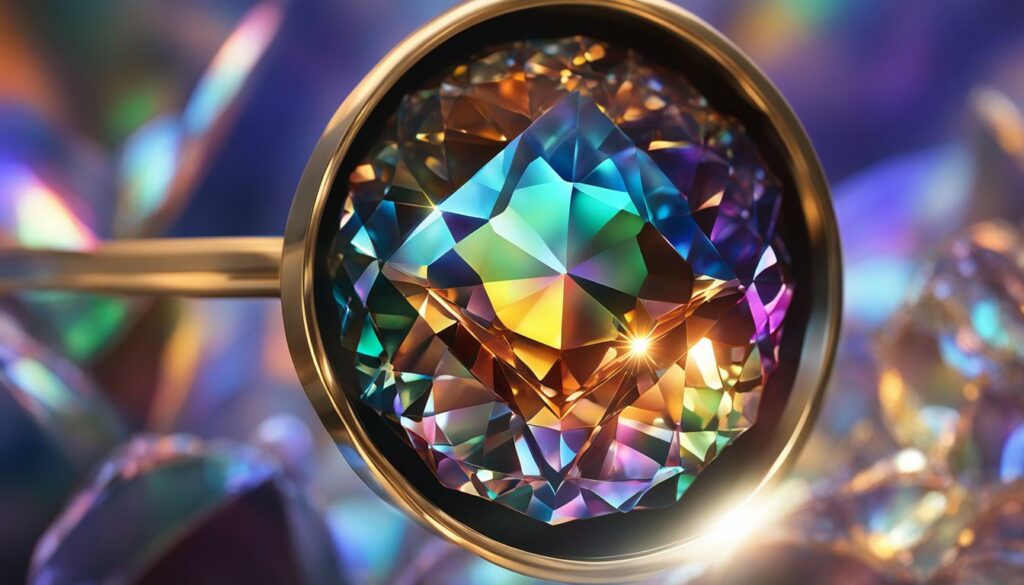
| Quality Indicator | Desirable Characteristics | Undesirable Characteristics |
|---|---|---|
| Surface Quality | Smooth and glass-like | Pits, scratches, or blemishes |
| Faceting Work | Sharp facet edges, precise meets | Overlapping or misaligned facets |
By carefully examining the gem’s surface quality and faceting work, you can gain insights into its cutting quality, craftsmanship, and overall value. These observations are crucial in appraising gemstones accurately and making informed decisions when purchasing or selling jewelry.
Exploring Cabochons with a Loupe
When examining cabochons with a jewelers loupe, there are a few key factors to consider. Cabochon gemstones have a smooth, polished convex top and a flat or slightly domed bottom. This unique shape requires a different approach when using a loupe to observe the stone’s characteristics.
One important aspect to evaluate is the polish of the cabochon. Using your loupe, carefully inspect the surface for cleanliness and the absence of scratches or blemishes. A well-polished cabochon should have a smooth, consistent finish, without any visible imperfections that may detract from its overall appearance.
Another essential element to examine is the contour of the cabochon. Look for an even and symmetrical shape with smooth transitions between the top and bottom. Pay attention to how light is reflected across the surface of the cabochon. An ideal cabochon will exhibit a uniform reflection, indicating a well-executed cut.
| Characteristics | Quality Indicators |
|---|---|
| Polish | Clean surfaces, absence of scratches |
| Contour | Even shape, smooth transitions |
| Light Reflection | Uniform reflection across the surface |
To gain a comprehensive understanding of a cabochon’s qualities, it’s crucial to examine it from different angles. Rotate the stone and observe how the light interacts with its surface. This will provide insights into its overall beauty and the play of colors that may be present within the stone.
By using your jewelers loupe to explore cabochons, you can appreciate the unique characteristics and craftsmanship that go into creating these exquisite gemstones. The careful examination of polish, contour, and light reflection will enable you to determine the quality of a cabochon and recognize the artistry involved in its creation.
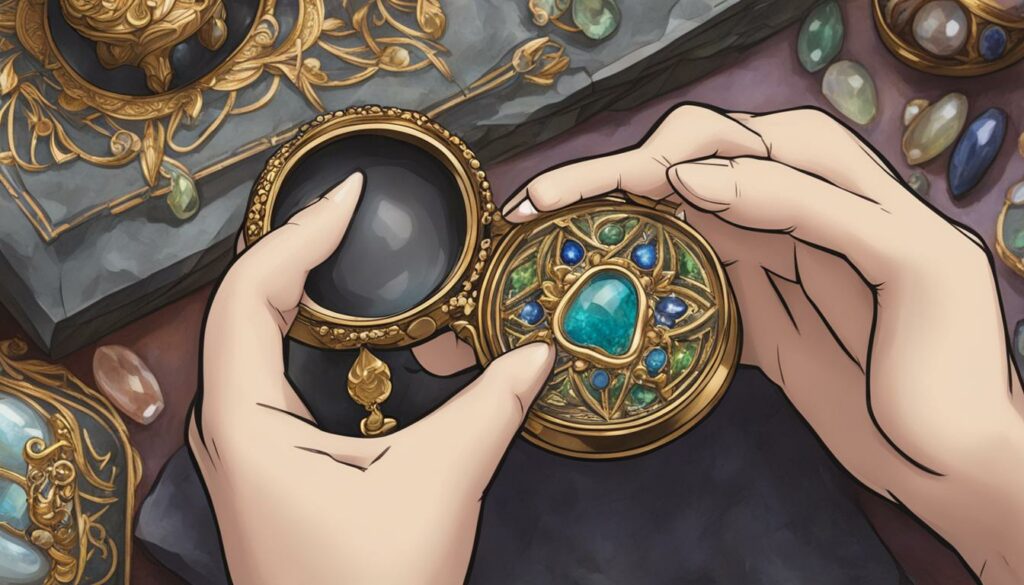
Examining Inclusions with a Jewelers Loupe
When using a jewelers loupe, it’s not just about marveling at the clarity of a gemstone or the precision of its cut. The loupe also allows us to explore the fascinating world of inclusions, which are imperfections that can be found inside gemstones. By carefully observing these inclusions, we can gain valuable insights into the gem’s history, authenticity, and even its rarity.
One type of inclusion commonly encountered is fractures. These fractures can interrupt the flow of light within the gemstone and may vary in size and shape. Some fractures may exhibit a multicolored radiance, adding a unique allure to the gem. Another type of inclusion is mineral inclusions, which can appear as clusters of debris or even whole crystals. These inclusions not only provide visual interest but also offer clues about the gemstone’s formation process.
Identifying and understanding these inclusions requires patience and a keen eye. By using a jewelers loupe, we can scrutinize the fractures and mineral inclusions in detail, appreciating their distinct characteristics. This examination can further deepen our appreciation for the natural beauty and complexity of gemstones, making the use of a loupe an essential tool for gem enthusiasts and jeweler professionals alike.
Introduction to Jewelry Making
Jewelry making is a captivating craft that allows individuals to unleash their creativity and create unique, wearable pieces of art. With various techniques and materials to explore, jewelry making offers endless possibilities for self-expression. Whether you’re a hobbyist or aspiring professional, learning the different types of jewelry making techniques can open up a world of artistic possibilities.
Types of Jewelry Making
There are several types of jewelry making techniques, each with its own distinct characteristics and style. Some popular techniques include:
- Beaded Jewelry: This technique involves stringing beads together using a needle, thread, or wire. Beaded jewelry allows for countless design options, with an array of bead shapes, sizes, and colors to choose from.
- Wire Jewelry: Wire jewelry making utilizes wire wrapping techniques to connect various components. This technique allows for intricate designs and offers flexibility in creating unique shapes and patterns.
- Silver and Goldsmithing: Silver and goldsmithing involve shaping precious metals using techniques such as hammering, soldering, and casting. This technique allows for the creation of stunning metal-based jewelry pieces with intricate details.
- Glass Fused Jewelry: Glass fused jewelry involves using a kiln to fuse glass components together. This technique allows for the creation of vibrant and unique designs, incorporating colorful glass elements.
- Metal Clay Jewelry: Metal clay jewelry is created using a clay-like substance made from metal particles. When fired in a kiln, the clay solidifies, resulting in a metal piece. This technique offers versatility in design, allowing for intricate and detailed metal jewelry.
By exploring these different types of jewelry making techniques, you can find the one that resonates with your creative vision and style. Experimenting with various materials and methods will expand your skills and help you develop your unique artistic voice.
| Technique | Characteristics |
|---|---|
| Beaded Jewelry | Stringing beads using needle, thread, or wire. Offers a wide range of design options with various beads. |
| Wire Jewelry | Utilizes wire wrapping techniques to connect components. Allows for intricate designs and unique shapes. |
| Silver and Goldsmithing | Shaping and manipulating precious metals like silver and gold using techniques like hammering and soldering. |
| Glass Fused Jewelry | Using a kiln to fuse glass components together, resulting in vibrant and colorful designs. |
| Metal Clay Jewelry | Creating jewelry using a clay-like substance made from metal particles, which solidifies when fired in a kiln. |
Remember, the beauty of jewelry making lies in the journey of discovery and creativity. Embrace the process, experiment with different techniques, and let your imagination soar as you create beautiful and personalized pieces of jewelry.
Starting Your Jewelry Making Journey
Embarking on a jewelry making journey can be an exciting and fulfilling creative pursuit. Whether you’re looking to make jewelry for personal use or considering it as a potential business venture, starting your jewelry making journey at home is a great way to explore your creativity and develop your skills. Here are some steps to get you started.
Gather Inspiration and Design
Before starting your jewelry making project, gather inspiration from various sources such as magazines, websites, or even nature. Create a design or sketch of the piece you want to make, keeping in mind the style, materials, and techniques you plan to use. This will serve as a blueprint for your creation and help you stay organized throughout the process.
Acquire Tools and Materials
Next, gather the necessary tools and materials based on your design. Basic tools for jewelry making include pliers, wire cutters, a jewelry saw, and a work surface. You’ll also need materials such as beads, gemstones, metals, and findings. Start with a small selection to practice and experiment with before expanding your collection.
Set Up Your Workspace
Find a well-lit area in your home where you can set up a dedicated workspace for jewelry making. Ensure you have a sturdy table or workbench, comfortable seating, and proper lighting. Having a clean and organized workspace will make the creative process more efficient and enjoyable.
Start Creating
Now it’s time to dive into the world of jewelry making. Start by following online tutorials or taking beginner’s classes to learn basic techniques and gain confidence in your skills. Practice different techniques and experiment with different materials to discover your unique style. Remember, the more you practice, the better you’ll become.
By following these steps and exploring your creativity, you’ll be well on your way to creating beautiful and unique jewelry pieces right from the comfort of your own home.
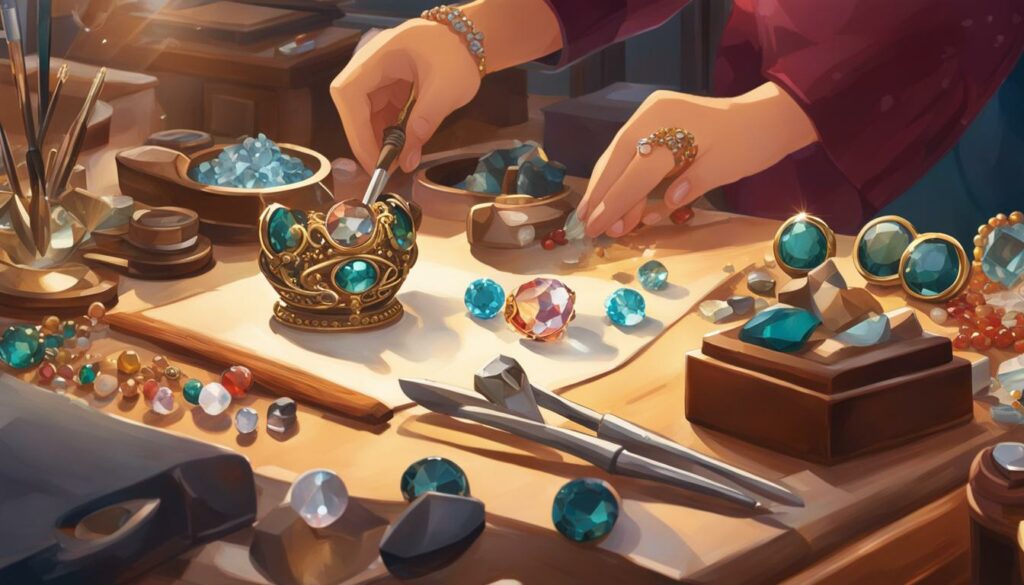
The History of Jewelry Making
Throughout history, jewelry making has been an art form that has captivated cultures around the world. From ancient times to the modern era, jewelry has served as a symbol of status, wealth, and personal expression. The evolution of jewelry making reflects not only the advancements in technology and craftsmanship but also the cultural and social changes that have shaped our societies.
In ancient civilizations such as Egypt, jewelry played a significant role in religious rituals and burial practices. Intricate designs and precious gemstones adorned the pharaohs and their tombs, symbolizing power and protection in the afterlife. The Greeks and Romans utilized jewelry as a form of personal adornment, with intricate gold and silver pieces reflecting the opulence of their empires.
During the Renaissance, jewelry making reached new heights of craftsmanship and artistry. Intricate metalwork, gemstone settings, and enamelwork adorned the wealthy elite, showcasing their status and refined taste. As trade routes expanded, exotic gemstones from distant lands became more accessible, leading to innovative designs and techniques.
The Evolution of Jewelry
The evolution of jewelry making continued into the modern era, with the introduction of new materials and techniques. The Industrial Revolution brought mass production, making jewelry more affordable and accessible to a wider audience. With the emergence of Art Nouveau and Art Deco movements in the early 20th century, jewelry design became more experimental and expressive, reflecting the changing societal norms and aesthetics.
Today, jewelry making encompasses a wide range of styles and techniques, from traditional handcrafted pieces to avant-garde designs created using cutting-edge technology. Jewelry artists draw inspiration from diverse cultures and art movements, pushing the boundaries of creativity and personal expression.
| Period | Key Characteristics |
|---|---|
| Ancient Civilizations | Symbolism, religious significance, use of precious materials |
| Renaissance | Intricate craftsmanship, opulent designs |
| Industrial Revolution | Mass production, affordability |
| 20th Century | Experimental designs, diverse materials |
| Modern Era | Technological advancements, diverse styles |
As we look back on the history of jewelry making, we can appreciate the artistry, skill, and innovation that have been integral to its evolution. Whether it’s a treasured heirloom or a fashion-forward statement piece, jewelry continues to hold a special place in our hearts and in the tapestry of human culture.
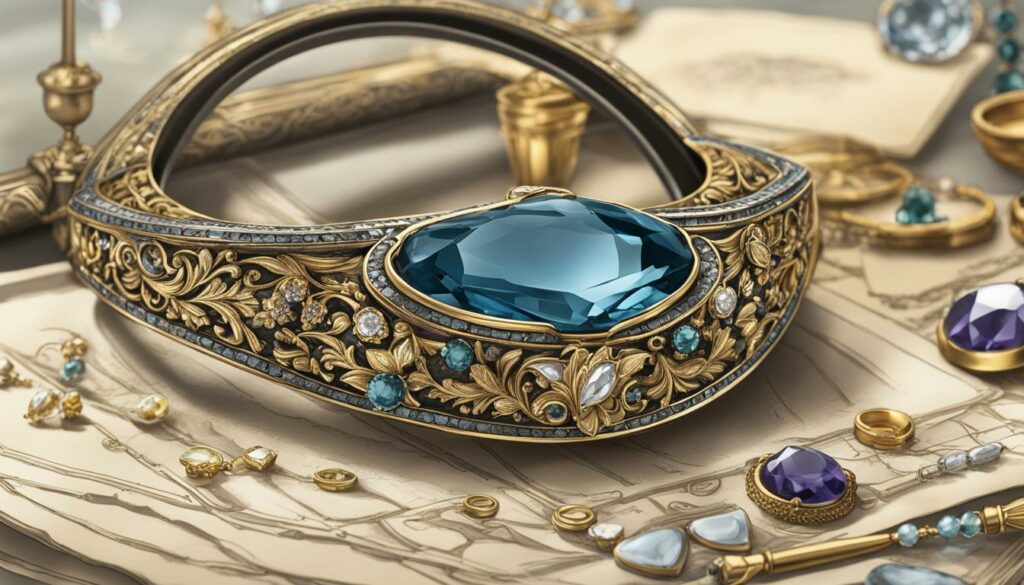
Learning Jewelry Making
If you’re interested in jewelry making, there are various ways to learn and develop your skills. Whether you want to pursue it as a hobby or consider it as a potential profession, there are options available to suit your needs. Here are some suggestions on how to learn jewelry making and the benefits of taking jewelry making classes.
Finding the Right Classes
Taking jewelry making classes can provide you with the foundational knowledge and techniques needed to create beautiful pieces. Look for classes offered by reputable organizations or local artisans who specialize in jewelry making. Online platforms also offer a wide range of courses, allowing you to learn at your own pace from the comfort of your home.
Consider what type of jewelry making techniques you are interested in and look for classes that cater to your preferences. Whether it’s wire wrapping, metal clay, or beading, there are classes available for every skill level.
The Benefits of Jewelry Making Classes
Joining jewelry making classes offers several advantages. Firstly, you’ll have access to expert guidance and instruction from experienced instructors who can provide valuable feedback and help you refine your techniques. Additionally, taking classes gives you the opportunity to connect with other jewelry enthusiasts, fostering a sense of community and providing a supportive learning environment.
Furthermore, jewelry making classes often provide access to specialized tools and equipment that may be expensive to purchase individually. This allows you to experiment with different techniques and materials without a significant upfront investment.
By taking jewelry making classes, you can enhance your skills, gain inspiration from others, and develop a deeper understanding of the craft. Whether you’re a beginner or already have some experience, there’s always something new to learn and discover in the world of jewelry making.
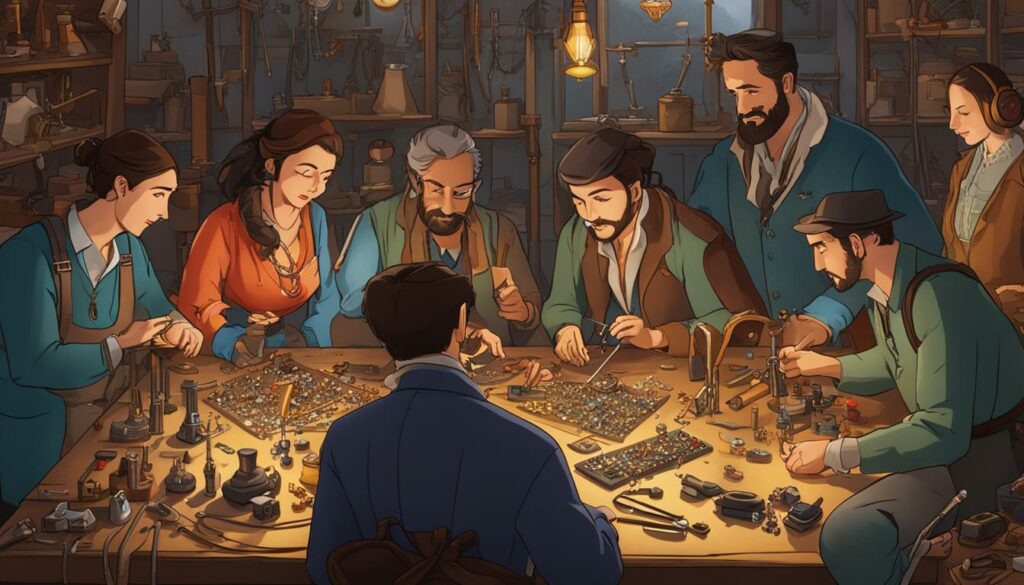
| Pros of Jewelry Making Classes | Cons of Jewelry Making Classes |
|---|---|
|
|
Jewelry Making as a Hobby vs. Profession
When it comes to jewelry making, individuals have the option to pursue it as a hobby or turn it into a full-fledged profession. Both choices offer unique experiences and opportunities for creativity, but they differ in terms of commitment and investment.
As a hobby, jewelry making allows for exploration and self-expression without the need for extensive equipment or formal education. It can be a satisfying and fulfilling pastime that provides a creative outlet and a sense of accomplishment. With a hobbyist approach, you have the freedom to experiment with different materials, techniques, and designs, and there are no strict deadlines or pressures to meet customer demands.
| Advantages | Considerations | |
|---|---|---|
| Hobby |
|
|
“Jewelry making as a hobby allows me to unwind and tap into my creativity. I enjoy the process of bringing my designs to life and wearing unique pieces that reflect my personal style.”
Becoming a professional jeweler, on the other hand, requires a greater commitment in terms of education, marketing, and investment in equipment. Professionals often specialize in a specific technique or metal alloy, honing their skills to create high-quality, marketable pieces. They may also pursue formal training and certifications to enhance their knowledge and credibility in the industry.
| Advantages | Considerations | |
|---|---|---|
| Profession |
|
|
“Becoming a professional jeweler has allowed me to turn my passion into a thriving business. I take pride in creating exquisite pieces and building lasting relationships with my clients.”
Whether you choose jewelry making as a hobby or a profession, the key is to follow your passion and enjoy the process. Both paths offer unique opportunities for self-expression, creativity, and personal growth. It’s a journey that allows you to explore your artistic side and create beautiful pieces that can be cherished for a lifetime.
Conclusion
After exploring the world of jewelry making and the use of a jeweler’s loupe, I am amazed by the endless possibilities and creative opportunities that these crafts offer. Jewelry making allows individuals to express themselves through wearable art, while the use of a jeweler’s loupe enhances the examination process, providing detailed insights into gem quality and craftsmanship.
Whether you choose to pursue jewelry making as a hobby or a profession, there is something truly special about creating unique pieces that reflect your personal style. From wire-wrapping to metal clay techniques, the world of jewelry making offers a wide range of materials and methods to explore.
Similarly, using a jeweler’s loupe elevates your ability to appreciate the hidden beauty of gemstones, evaluate their quality, and gain a deeper understanding of the intricacies of jewelry. By mastering the art of how to use a jeweler’s loupe correctly, you can unlock a whole new level of appreciation for the craftsmanship and artistry behind every piece.
FAQ
How do I use a jewelers loupe correctly?
Hold the loupe up to your eye and rest a finger or the back of your hand against your face for stability. Bring the jewelry or gemstone within an inch or two of the loupe and move the jewelry instead of the loupe to focus on specific details. Bracing the hand holding the jewelry against the hand holding the loupe provides a stable view.
Why do I need a loupe for jewelry examination?
Owning a loupe allows you to examine your jewelry for identifying characteristics, cracks, chips, or other damage without visiting a jeweler. It helps in identifying if your diamond is real, understanding the Kimberley Process for ethically sourced diamonds, and assessing the 4Cs of cut, color, and clarity. Loupes also enable detailed examination of gemstones and colored gemstone inclusions.
How do I select the right loupe for my needs?
When choosing a loupe, consider the magnification, with 10x being the optimal choice for jewelry examination. Triplet loupes with three lenses offer clarity and color correction. Look for a loupe with a black body to minimize reflections and external color interference.
How do I start using my loupe?
Hold your loupe up to your eye at no farther than an inch away. Rest a finger or the back of your hand against your face for stability. Bring the jewelry or gemstone within an inch or two of the loupe, moving the jewelry instead of the loupe to focus on specific details. Bracing the hand holding the jewelry against the hand holding the loupe provides a stable view.
What should I look for when examining gem exteriors with a loupe?
Use your loupe to judge the quality of a gem’s faceting work by examining its surface. Look for a smooth, glass-like surface with minimal pits or scratches. Check for a well-polished girdle and sharp facet meets. Assess the sharpness of facet edges to identify quality cutting.
How do I examine cabochons with a loupe?
When examining cabochons, focus on the polish for cleanliness and absence of scratches. Check for even contour and smooth light reflection across the top. Avoid flattened areas that disrupt the flow of light. Pay attention to the shape and curvature of the cabochon from different angles.
How do I examine inclusions with a loupe?
Inclusions inside gems provide valuable insights. Fractures are identifiable by their interruption of light flow and may vary in shape and size. Mineral inclusions can be clusters of debris or whole crystals, adding visual interest. Look for fractures with multicolored radiance and distinctive cleavage fractures in gems.
What is jewelry making?
Jewelry making involves creating decorative pieces using various materials and techniques. It can include beaded jewelry, wire jewelry, silver and goldsmithing, glass fused jewelry, and metal clay jewelry.
How do I start making jewelry?
Determine the type of jewelry you want to make, gather inspiration, and design your piece on paper. Acquire the necessary tools and materials based on your design. Set up a well-lit workspace and start making your jewelry using online tutorials or classes.
What is the history of jewelry making?
Jewelry making dates back thousands of years and has evolved across cultures. Early jewelry included bone necklaces and stone amulets. Egyptians decorated their tombs with ornate gems, while Greeks and Romans used jewelry for symbolism and wealth. The art of jewelry making continued to flourish during the Renaissance and continues to evolve with modern techniques.
How can I learn jewelry making?
Learning jewelry making can be done through online tutorials, in-person classes, or private instruction. The Crucible offers a variety of classes to learn different techniques and provides the opportunity to create original pieces of jewelry.
Can jewelry making be a hobby or profession?
Yes, jewelry making can be pursued as a hobby or profession. As a hobby, it allows for exploration and creativity without the need for extensive investment in equipment. Becoming a professional jeweler requires a greater commitment to education, marketing, and equipment. Professionals often specialize in a specific technique or metal alloy.
Source Links
- https://www.gemsociety.org/article/10x-loupe-the-gemologists-best-friend/
- https://imagesjewelers.com/how-to-use-a-loupe/
- https://www.thecrucible.org/guides/jewelry-making/
